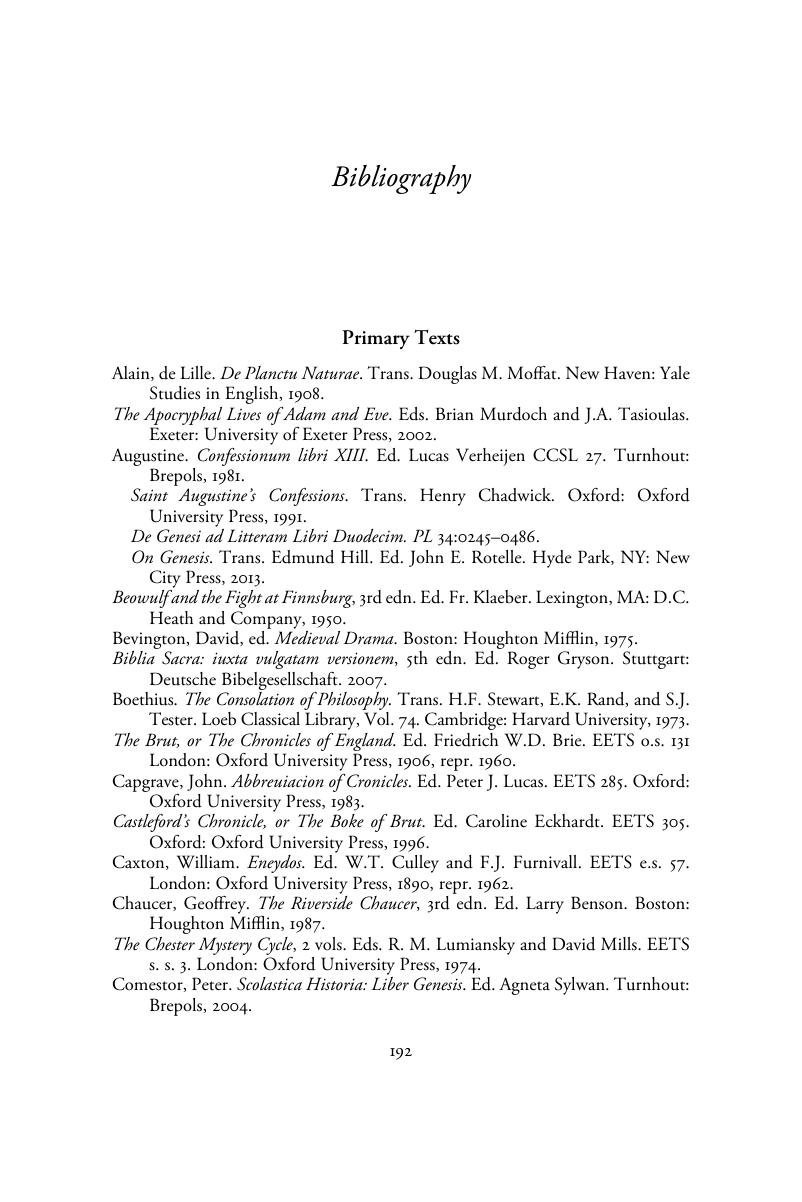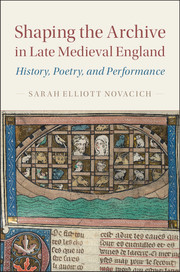Book contents
- Shaping the Archive in Late Medieval England
- Cambridge Studies in Medieval Literature
- Shaping the Archive in Late Medieval England
- Copyright page
- Dedication
- Contents
- Figures
- Acknowledgments
- A Note on Citation Style
- Abbreviations
- Introduction
- Chapter 1 Model Worlds
- Chapter 2 Ark and Archive
- Chapter 3 Uxor Noe and the Drowned
- Chapter 4 Infernal Archive
- Chapter 5 The Harrowing of Hell: Closure and Rehearsal
- Epilogue
- Notes
- Bibliography
- Index
- Cambridge Studies in Medieval Literature
- References
Bibliography
Published online by Cambridge University Press: 06 April 2017
- Shaping the Archive in Late Medieval England
- Cambridge Studies in Medieval Literature
- Shaping the Archive in Late Medieval England
- Copyright page
- Dedication
- Contents
- Figures
- Acknowledgments
- A Note on Citation Style
- Abbreviations
- Introduction
- Chapter 1 Model Worlds
- Chapter 2 Ark and Archive
- Chapter 3 Uxor Noe and the Drowned
- Chapter 4 Infernal Archive
- Chapter 5 The Harrowing of Hell: Closure and Rehearsal
- Epilogue
- Notes
- Bibliography
- Index
- Cambridge Studies in Medieval Literature
- References
Summary

- Type
- Chapter
- Information
- Shaping the Archive in Late Medieval EnglandHistory, Poetry, and Performance, pp. 192 - 207Publisher: Cambridge University PressPrint publication year: 2017



